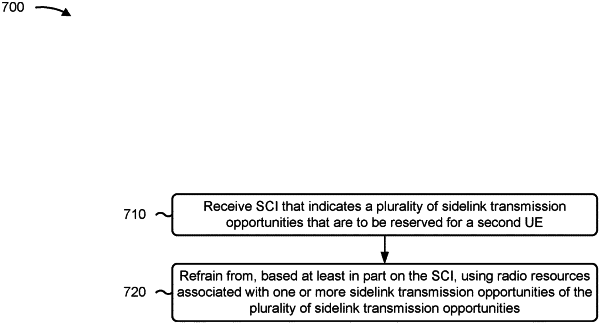| CPC H04W 28/26 (2013.01) [H04W 72/0446 (2013.01); H04W 72/0453 (2013.01); H04W 72/20 (2023.01); H04W 72/56 (2023.01)] | 15 Claims |

|
1. A method of wireless communication performed by a first user equipment (UE), comprising:
receiving sidelink control information (SCI) that indicates a plurality of sidelink transmission opportunities that are to be reserved for a second UE, wherein the SCI includes information associated with a channel access gap size for the plurality of sidelink transmission opportunities;
refraining from, based at least in part on the SCI, using radio resources associated with one or more sidelink transmission opportunities of the plurality of sidelink transmission opportunities:
determining the channel access gap size based at least in part on the information associated with the channel access gap size;
transmitting a first sidelink communication prior to a channel access gap associated with a sidelink transmission opportunity of the plurality of sidelink transmission opportunities in place of a second sidelink communication based at least in part on a duration of the first sidelink communication being shorter than a duration of the second sidelink communication; and
determining that the duration of the first sidelink communication is shorter than the duration of the second sidelink communication based at least in part on an indication of the duration of the first sidelink communication and an indication of the duration of the second sidelink communication in an SCI part 1 (SCI-1) component of the SCI.
|